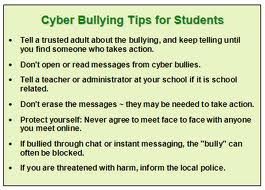Social networking is a way for one person to meet up with other people on the net. Social networking sites are online communities of internet users who want to communicate with other users about areas of mutual interest, whether from a personal, business or academic perspective. The specific functionality of the various sites may differ, but in general, the sites allow you to provide information about yourself and communicate with others through email, chat rooms and other forum.
The popularity of social networking sites, such as MySpace, Facebook, Twitter, and others has exploded in recent years, with usage in the United States increasing 93% since 2006, according to Netpop Research. The sites are popular not only with teenagers, but with adults as well: the number of adult internet users having a social networking profile has more than quadrupled in the past four years, according to the Pew Internet and American Life Project.
Social network sites are growing in popularity as attack vectors because of the volume of users and the amount of personal information that is posted. The nature of social networking sites encourages you to post personal information. Because of the perceived anonymity and false sense of security of the internet, users may provide more information about themselves and their life online than they would to a stranger in person. The information you post online could be used by those with malicious intent to conduct social engineering scams and attempt to steal your identity.
According to the Cumberland County School (CCS) District Technology Policy students have Legal obligations. Students in Middle and High school have internet accounts and they and parents have to sign an agreement stating that they agree to adhere to all federal, state, and local laws regarding the use of technology. These include but not limited to:
701JAR 5L120 Prevention of Objectionable Material Transmitted to Schools via computer
KRS 434.854 Misuse of Computer Information
The Student Technology Use Policy is intended to work with other District School policies. Violations of school discipline codes and/or other policies where technology is used can be considered a Violation of the Acceptable Use Policy. Students are not permitted to do the following: Harassing, insulting or attacking others.
Violations of these policies may result in restricted technology privileges suspension of all technology privileges or other consequences deemed appropriate. The consequences will follow the guidelines in the School/District Code of Conduct/Discipline Policies and deemed appropriate by the school principal and/or district Superintendent.
As a prospective administrator maybe I would have reacted to the situation as the administrators reacted in the cases I have read. If a student should create a slanderous MySpace or Facebook profile about me, my reaction would be dependent on the content of the slander. I think I would want to probably file a law suit, just to teach the students involved a lesson, as one principal did.
From my perspectives school districts should include policies in their School’s Code of Conduct where parents and students sign at the start of the year. These should include the consequences in creating slanderous profile of both staff and students on the various social networking sites, such as Facebook and MySpace. I would ensure that students are aware that when they indulge in these activities it could have lasting implications.
For example middle and high school students should be aware that college admissions officers and school administrators, do visit these sites and in some cases, admissions are denied to applicants, or disciplinary actions have been taken because of information or photos posted on line. Employers also review these sites for information about potential job applicants.
Some consequences I would include as an administrator are:
- Suspensions of up to ten days
- Ensuring that student make a public apology and recant slanderous/malicious profile created
What Administrators May Legally Do
These are some relevant Case Laws that can support administrators if they decide to take legal actions against a student who creates malicious or slanderous profiles about them on MySpace or Facebook:
1. Bethel School District v. Frazer, which said public schools, could “prohibit the use of vulgar and offensive terms in public disclosure.”
2. Hazelwood School District v. Kuhlmeier, which said, “educators do not offend the First Amendment by exercising editorial control over the style and content of speech so long as their actions are reasonably related to legitimate, pedagogical concerns.”
3. Morse v. Fredrick, which ruled that school officials, could censor a student’s speech that was “reasonably viewed as promoting illegal drug use.”
4. 1976 district court case that upheld school jurisdiction over off- campus student speech. Fenton v. Stear, where the court ruled “when a high school student refers to a high school teacher in a public place on a Sunday by a lewd and obscene name in such a loud voice that the teacher and others hear the insult, it may be deemed a matter for discipline in the discretion of the school authorities.















